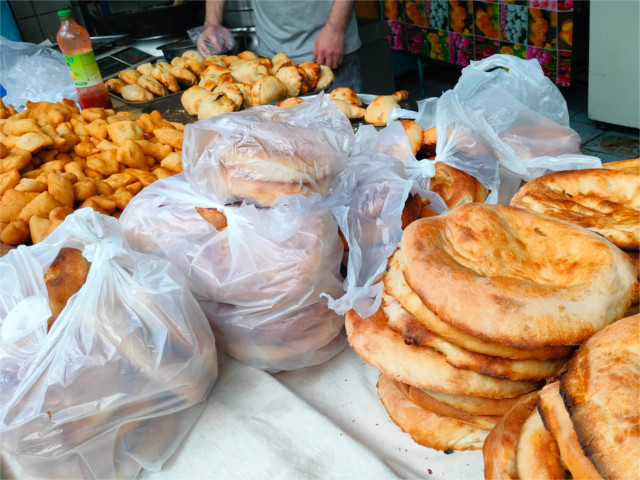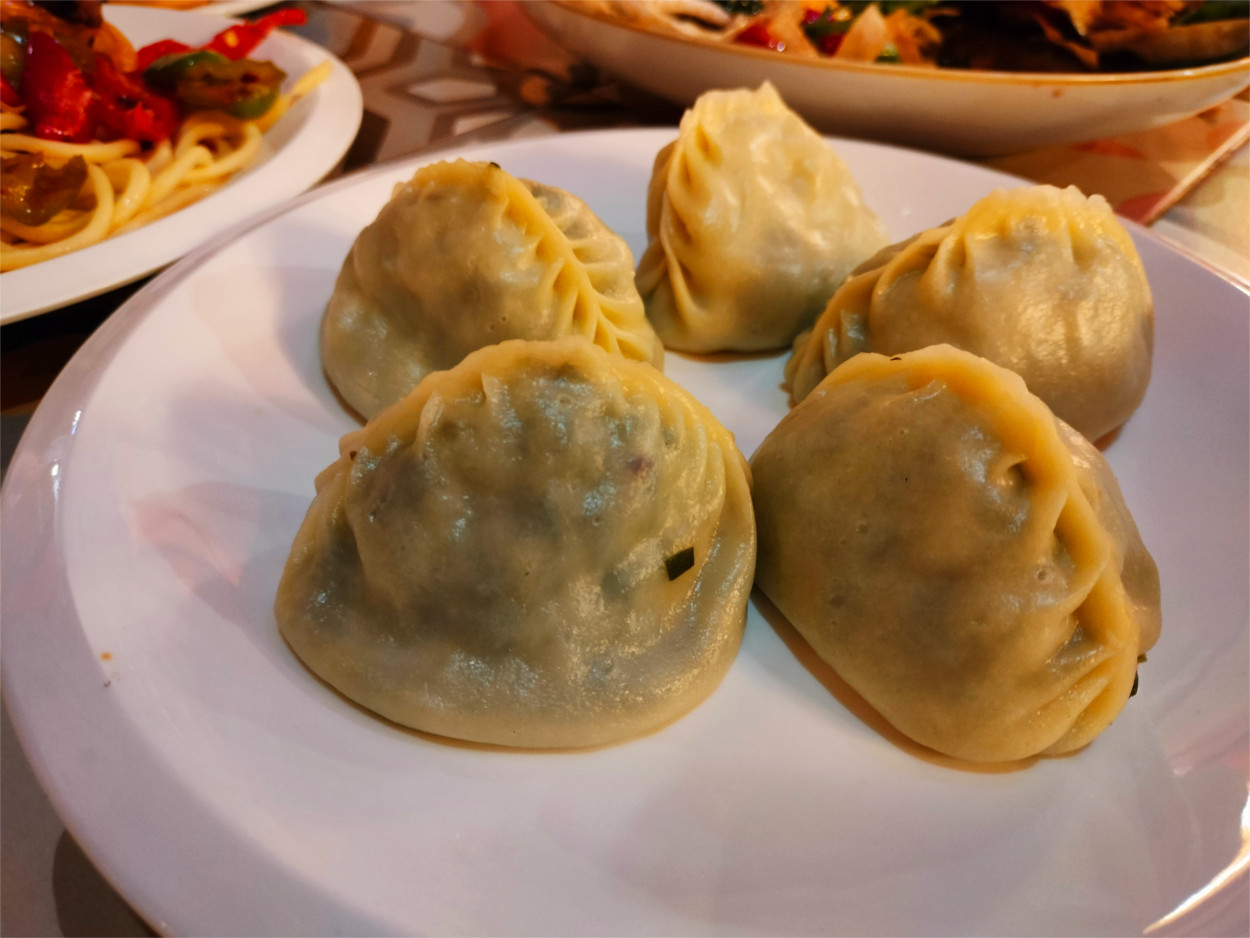Below the huge hall full of stalls selling produce in Almaty’s Green Market is an interesting smaller market. A maze of criss-cross lanes is lined with vegetables, household goods, and, as I discovered, a working bakery. I peered in to see half a dozen people hard at work. The matriarch was stamping the central pattern into the dough she had just rolled out for the ubiquitous tandyr nan. She was very annoyed when the two boys near the window started talking to me, “Tourist! Tourist!” she scolded. I called out to her, “Indian tourist,” guessing she would be a little mollified by this. I didn’t expect her to break into a huge grin and reply “Mogambo!” I hadn’t realized that the 1980s Bollywood hit had such a large reach.
Nan was not the only thing the bakery produced. The young men were packing up baursak and something else. “What is it?” I asked. “Samsa” one explained. I bought one. Baked samosas are not common in India. Nor is the irregular half-moon shape. This was filled with a juicy meat. Just right for my hour-late elevenses. Lunch was still far away according to The Family.



